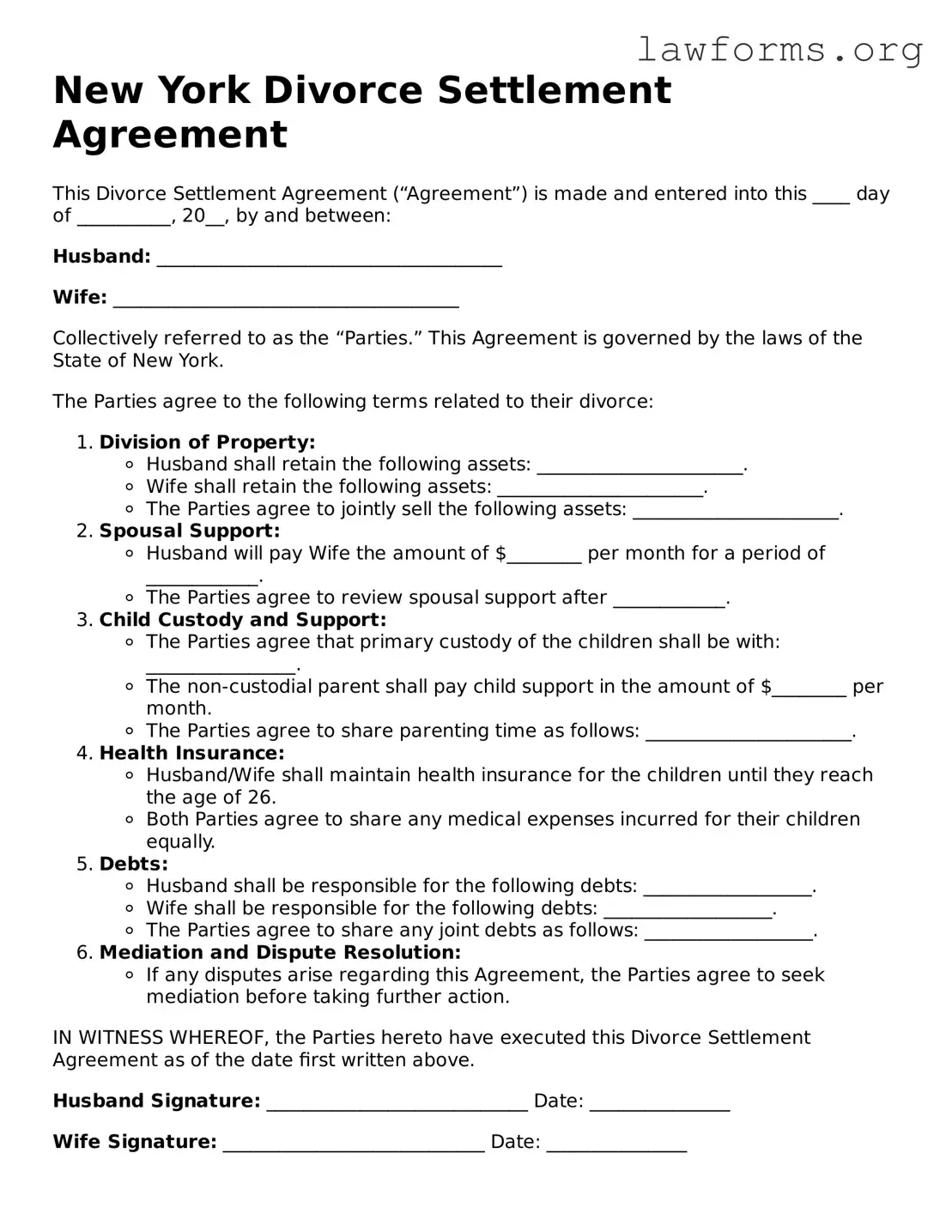New York Divorce Settlement Agreement
This Divorce Settlement Agreement (“Agreement”) is made and entered into this ____ day of __________, 20__, by and between:
Husband: _____________________________________
Wife: _____________________________________
Collectively referred to as the “Parties.” This Agreement is governed by the laws of the State of New York.
The Parties agree to the following terms related to their divorce:
- Division of Property:
- Husband shall retain the following assets: ______________________.
- Wife shall retain the following assets: ______________________.
- The Parties agree to jointly sell the following assets: ______________________.
- Spousal Support:
- Husband will pay Wife the amount of $________ per month for a period of ____________.
- The Parties agree to review spousal support after ____________.
- Child Custody and Support:
- The Parties agree that primary custody of the children shall be with: ________________.
- The non-custodial parent shall pay child support in the amount of $________ per month.
- The Parties agree to share parenting time as follows: ______________________.
- Health Insurance:
- Husband/Wife shall maintain health insurance for the children until they reach the age of 26.
- Both Parties agree to share any medical expenses incurred for their children equally.
- Debts:
- Husband shall be responsible for the following debts: __________________.
- Wife shall be responsible for the following debts: __________________.
- The Parties agree to share any joint debts as follows: __________________.
- Mediation and Dispute Resolution:
- If any disputes arise regarding this Agreement, the Parties agree to seek mediation before taking further action.
IN WITNESS WHEREOF, the Parties hereto have executed this Divorce Settlement Agreement as of the date first written above.
Husband Signature: ____________________________ Date: _______________
Wife Signature: ____________________________ Date: _______________
